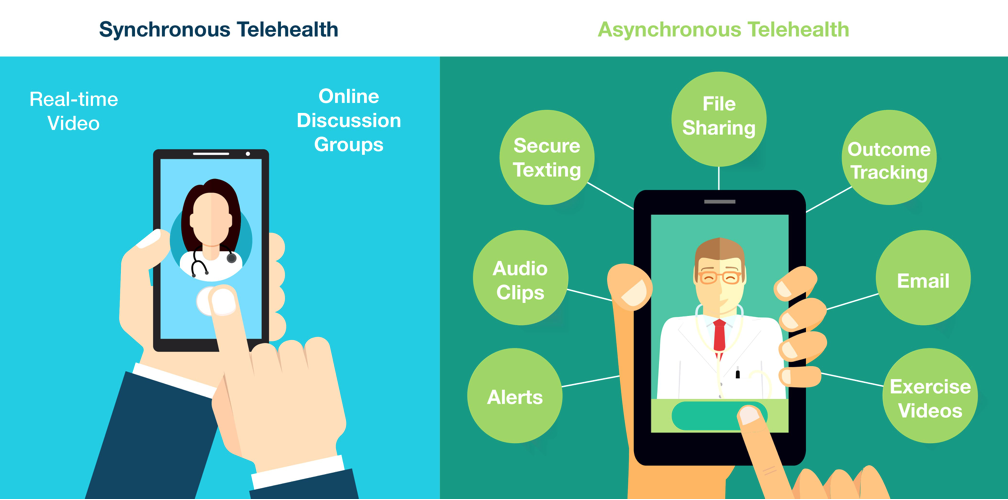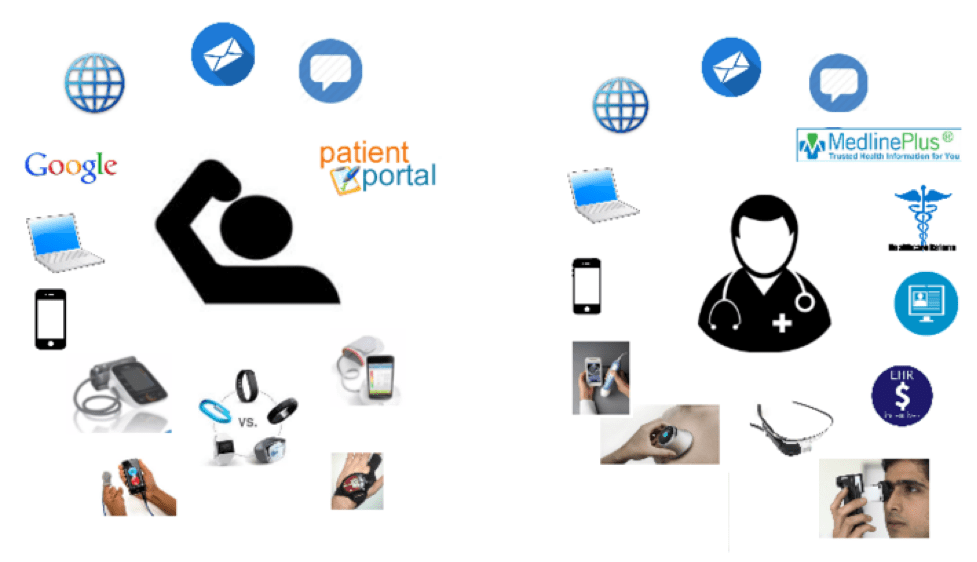In the midst of the COVID-19 pandemic, telemedicine has become a crucial tool in delivering healthcare services to patients without the need for face-to-face consultations. However, not all telemedicine solutions are created equal. Asynchronous telemedicine, in particular, has emerged as a promising alternative to traditional telemedicine approaches.
Asynchronous telemedicine, also known as “store-and-forward” telemedicine, involves collecting patient data, such as medical history, diagnostic images, and test results, and transmitting them to healthcare providers for review and analysis at a later time. This approach allows patients to receive medical care at their convenience, without the need for real-time interactions with healthcare providers. In this article, we will explore the concept of asynchronous telemedicine, its benefits, and how it is being used in the healthcare industry today.
Asynchronous telemedicine is a form of telemedicine in which patient-initiated communication is sent to a healthcare provider, who then responds at a later time. It is sometimes referred to as “store and forward” due to the nature of the communication, where data is stored and then forwarded to the recipient. This type of telemedicine can be used for both primary care and specialty care. It can also be used to provide access to rural or underserved populations. Asynchronous telemedicine can include the use of digital images, audio recordings, and written reports to communicate with healthcare providers.

What is Asynchronous Telemedicine?
Asynchronous Telemedicine is a healthcare delivery method that allows medical providers to perform patient consultations without the need for an in-person visit. This type of telemedicine is considered to be one of the most convenient and cost-effective ways to deliver health care services.
Asynchronous Telemedicine services use telecommunication technology to allow medical providers to collect patient data, review the information, and deliver medical advice and instructions without the need for an in-person visit. This type of telemedicine is especially beneficial for patients who are unable to travel to a provider’s office or who live in remote areas with limited access to medical services.
Benefits of Asynchronous Telemedicine
Asynchronous Telemedicine offers numerous benefits for both patients and providers. For patients, this type of telemedicine can provide convenient access to medical care, eliminating the need to travel to a provider’s office. Asynchronous Telemedicine also reduces wait times, allowing patients to receive medical advice and instructions quickly and easily.
For providers, Asynchronous Telemedicine allows them to deliver medical advice and instructions without the need for an in-person visit. This can help to reduce wait times and increase efficiency, while also reducing costs associated with in-person visits. Asynchronous Telemedicine also allows providers to expand their reach, as they can provide medical advice to patients who live in remote areas with limited access to medical services.
How Does Asynchronous Telemedicine Work?
Asynchronous Telemedicine services allow medical providers to collect patient data using telecommunication technology. This data is then reviewed by the provider and a diagnosis is made. The provider can then deliver medical advice and instructions to the patient via telephone, email, or an online portal.
The patient can then follow the provider’s advice and instructions until the next scheduled appointment. In some cases, the provider may also schedule follow-up visits or tests to monitor the patient’s progress. Asynchronous Telemedicine services can also be used to monitor chronic conditions, such as diabetes, high blood pressure, and asthma, to ensure that the patient is receiving the necessary care and treatment.
Examples of Asynchronous Telemedicine Services
Asynchronous Telemedicine services can be used to provide medical advice and instructions to patients with a wide range of conditions and ailments. Examples of Asynchronous Telemedicine services include:
- Diagnosing and treating common illnesses, such as colds, flu, and upper respiratory infections.
- Monitoring and managing chronic conditions, such as diabetes, hypertension, and asthma.
- Providing follow-up care and instructions to patients who have undergone surgery or other medical procedures.
- Providing mental health services, such as counseling and therapy.
Conclusion
Asynchronous Telemedicine is a convenient and cost-effective way to deliver healthcare services. This type of telemedicine offers numerous benefits for both patients and providers, including convenient access to medical care, reduced wait times, and expanded reach. Asynchronous Telemedicine services can be used to diagnose and treat a wide range of conditions and ailments, as well as provide follow-up care and instructions.
Frequently Asked Questions about Asynchronous Telemedicine
Asynchronous telemedicine is a type of remote healthcare service that allows patients and providers to interact without being in the same physical location. It allows medical professionals to diagnose and treat patients through digital communication, helping to provide more accessible medical services to those who may not be able to travel to a healthcare center.
What is asynchronous telemedicine?
Asynchronous telemedicine is a type of healthcare service that allows patients and providers to interact without being in the same physical location. It allows medical professionals to diagnose and treat patients through digital communication, such as video conferencing, phone calls, and online forms. This type of telemedicine is known as asynchronous because the interaction between the patient and the provider does not occur in real-time. Instead, the patient can send information to the provider, who can then assess the information and respond at a later time.
Who can benefit from asynchronous telemedicine?
Asynchronous telemedicine can be beneficial to both patients and healthcare providers. For patients, it offers a convenient way to access medical care without having to leave their home or travel to a healthcare center. This can be especially beneficial for those who live in rural areas or who have mobility issues. For healthcare providers, asynchronous telemedicine allows them to provide medical care to a wider range of patients without having to add more staff or increase their physical presence.
What types of services are provided through asynchronous telemedicine?
Asynchronous telemedicine can provide many of the same services as traditional in-person visits, such as diagnosis, treatment plans, and follow-up care. It can also be used for preventive care, such as providing health education and counseling. Additionally, some asynchronous telemedicine services offer access to remote medical devices, such as digital stethoscopes and glucose monitors, which can be used to monitor a patient’s health and provide data to the provider.
How secure is asynchronous telemedicine?
Asynchronous telemedicine is a secure and reliable way to access healthcare services. All information is encrypted and securely transmitted between the patient and the provider, protecting the data from unauthorized access. Additionally, providers are required to adhere to HIPAA guidelines, which ensure that patient information is kept confidential and secure.
What types of providers offer asynchronous telemedicine services?
Asynchronous telemedicine services are offered by a range of healthcare providers, including primary care physicians, specialist physicians, nurses, and other healthcare professionals. In addition, many hospitals and health systems are now offering asynchronous telemedicine services, allowing patients to access medical care from the comfort of their own homes.
In conclusion, asynchronous telemedicine is a revolutionary approach to healthcare that offers tremendous benefits to both patients and healthcare providers alike. It allows patients to receive medical attention without the need for face-to-face interactions, which is especially beneficial in times of crisis such as the COVID-19 pandemic. Asynchronous telemedicine also offers healthcare providers the opportunity to save time and resources while still providing high-quality medical care to their patients.
As technology continues to advance, we can expect to see even more innovative solutions being developed in the field of asynchronous telemedicine. With the ability to provide medical attention virtually, healthcare providers can reach more patients in need of care, even those in remote areas. Asynchronous telemedicine is a game-changer in the healthcare industry, and it is exciting to think about the possibilities that lie ahead for this transformative approach to healthcare delivery.


